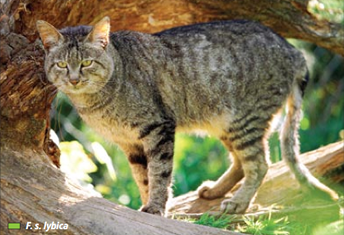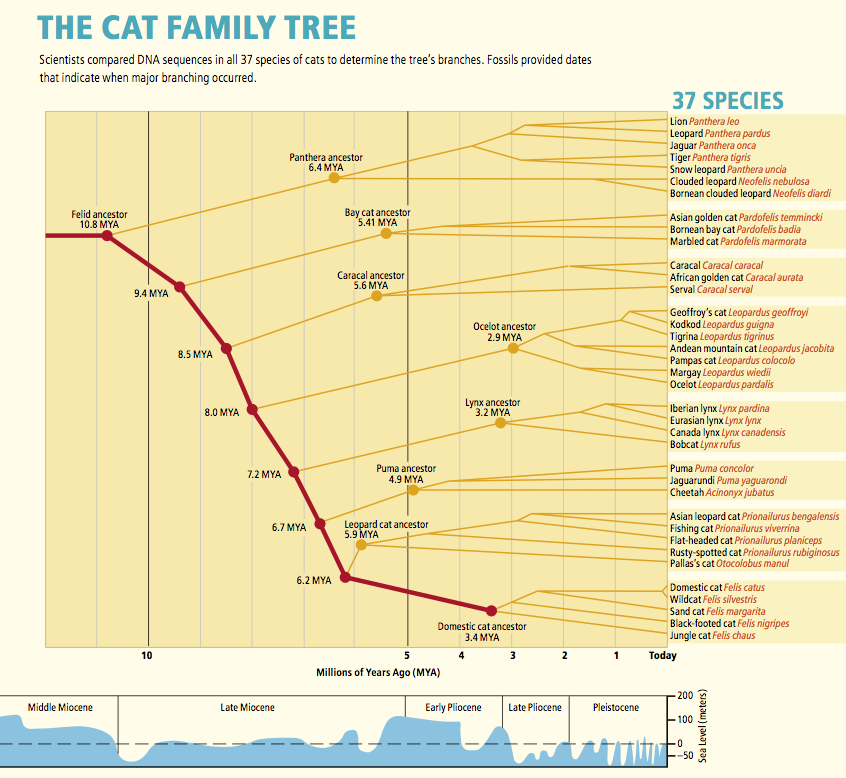The Evolution of Purring
The domestic cat (Felis silvestris catus) evolved from the African wild cat (Felis silvestris lybica) approximately 9,500 years ago in the Fertile Crescent [1]. While much research has been conducted to determine the taxonomical arrangement of the 37 species within the Felidae family that are alive today [17], little information has been collected on the taxonomy of purring.
In 1834 Owen found that the hyoid bone, which is attached to the top of the larynx, is incompletely ossified in the lion, meaning that instead of being a solid, inflexible structure, the hyoid “bone” is actually an elastic ligament [18]. In 1916 Pocock confirmed this observation, and found that tigers, leopards, jaguars and snow leopards also have incompletely ossified hyoid bones [19]. Both Owen and Pocock proposed that the presence of this elastic hyoid was responsible for the ability to roar. Following these discoveries, the Felidae cat family was subdivided into two mutually exclusive categories, “purring cats” and “roaring/non-purring cats,” based on the presence or absence of an ossified hyoid bone [4]. In general, it was believed that all cats capable of purring have completely ossified hyoids, while roaring cats have incompletely ossified hyoids [4]. Whether or not the ossification status of the hyoid determines a cat’s ability to roar or purr is still unknown [20], and research into the subject is complicated by existence of the snow leopard (Uncia uncia). The snow leopard, like typical roaring cats, has an incompletely ossified hyoid, yet it does not roar, but purrs instead [21]. |

Figure 2. African wildcat, the closest relative
of the domestic cat. Source: Ref. 1
|
| In the phylogenetic tree shown above (Figure 1), the four roaring species are located at the top of the tree, in the Panthera cluster. There is still much debate regarding whether the snow leopard should be considered a member of the Panthera or Uncia genus [4]. However, it is clear that, within the Felidae family, purring evolved only once. |
 Purring in the Domestic Cat
Purring in the Domestic Cat
